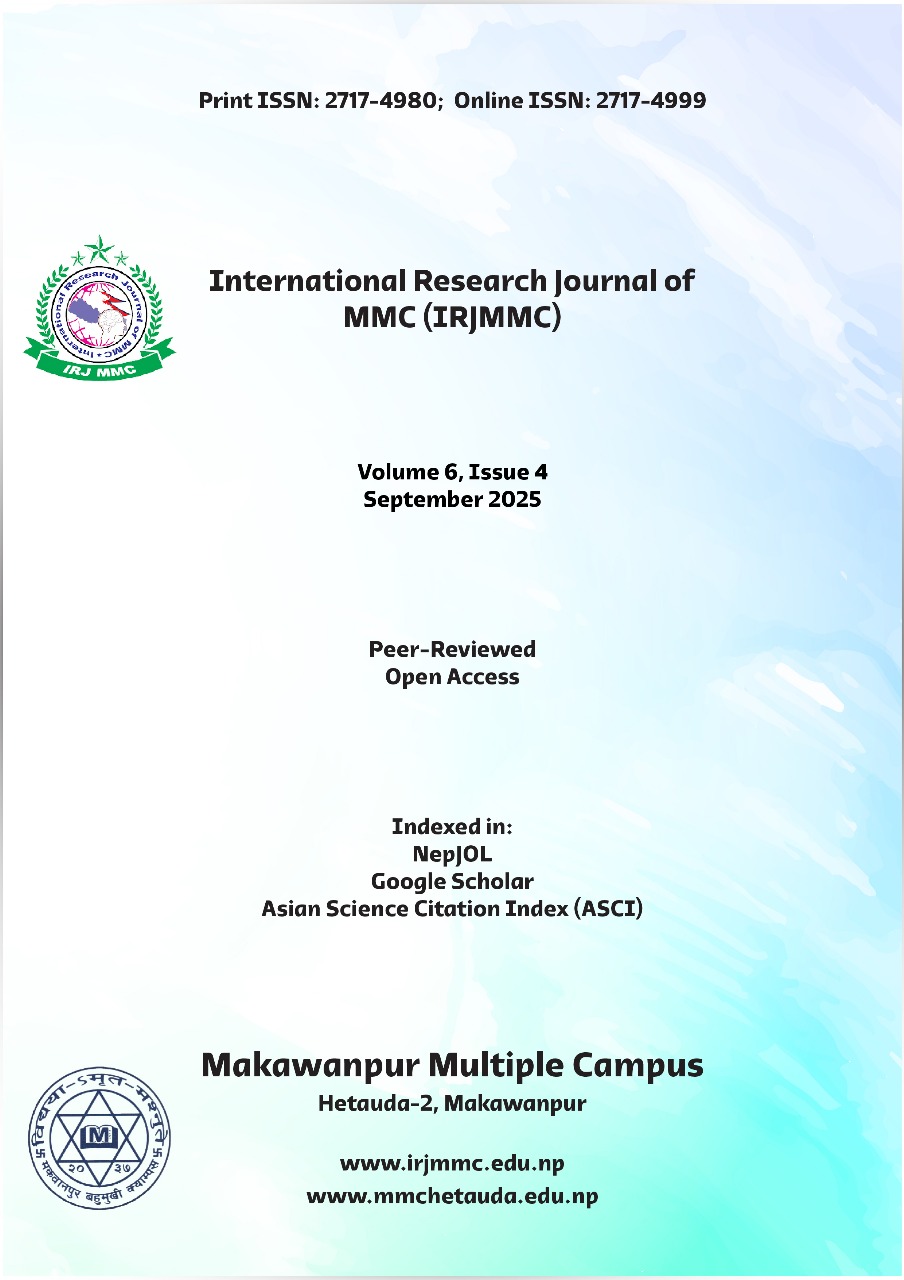Organizational Ergonomics and Work Effectiveness in Nepal’s Industrial Sector: A PLS-SEM Study
DOI:
https://doi.org/10.3126/irjmmc.v6i4.85509Keywords:
organizational ergonomics, work effectiveness, productivity, PLS SEM, organization, ergonomics, communicationAbstract
Background: Organizational ergonomics is a very new idea in the industrial sector of developing economies. The industries in the Kathmandu Valley of Nepal are increasingly experiencing issues related to the feasibility of productivity versus the workplace health standards but not much research has been done to understand how well the principles of ergonomics can be systematically forwarded to enhance the productivity in the industry and the health of the employee in this context.
Purpose: This paper has studied the organizational ergonomics across the Nepali industrial sector in Kathmandu Valley and highlighted the barriers of implementing ergonomics in an organizational setting and then offered the evidence-based recommendations.
Methods: Descriptive and explanatory research design is used in this study. Self-administered structured questionnaires were used to collect data. A total of 160 responses were obtained via KOBO toolbox from Balaju, Patan, and Bhaktapur. Descriptive and inferential statistics were used to evaluate the data quantitatively, and Smart PLS 4 was used to determine the relationships between dependent and independent variables using SEM.
Findings: In Nepal, implementation of organizational ergonomics is not developed well. The major obstacles were the lack of health-related emphasis over production strains to the detriment of health conditions due to inadequate managerial training on ergonomic fundamentals and conflicts at work. The statistical analysis proved that a significant relationship exists between communication, motivation, managerial factors, work design, and performance management.
Conclusion The study confirms that performance management is a central mechanism linking organizational ergonomic factors communication, motivation, managerial practices, and work design to work effectiveness. However, practical implementation, particularly in contexts like Nepal, remains challenged by a production-centric culture, insufficient managerial training, and workplace conflicts.
Downloads
Downloads
Published
How to Cite
Issue
Section
License
Copyright (c) 2025 International Research Journal of MMC (IRJMMC)

This work is licensed under a Creative Commons Attribution-NonCommercial 4.0 International License.




